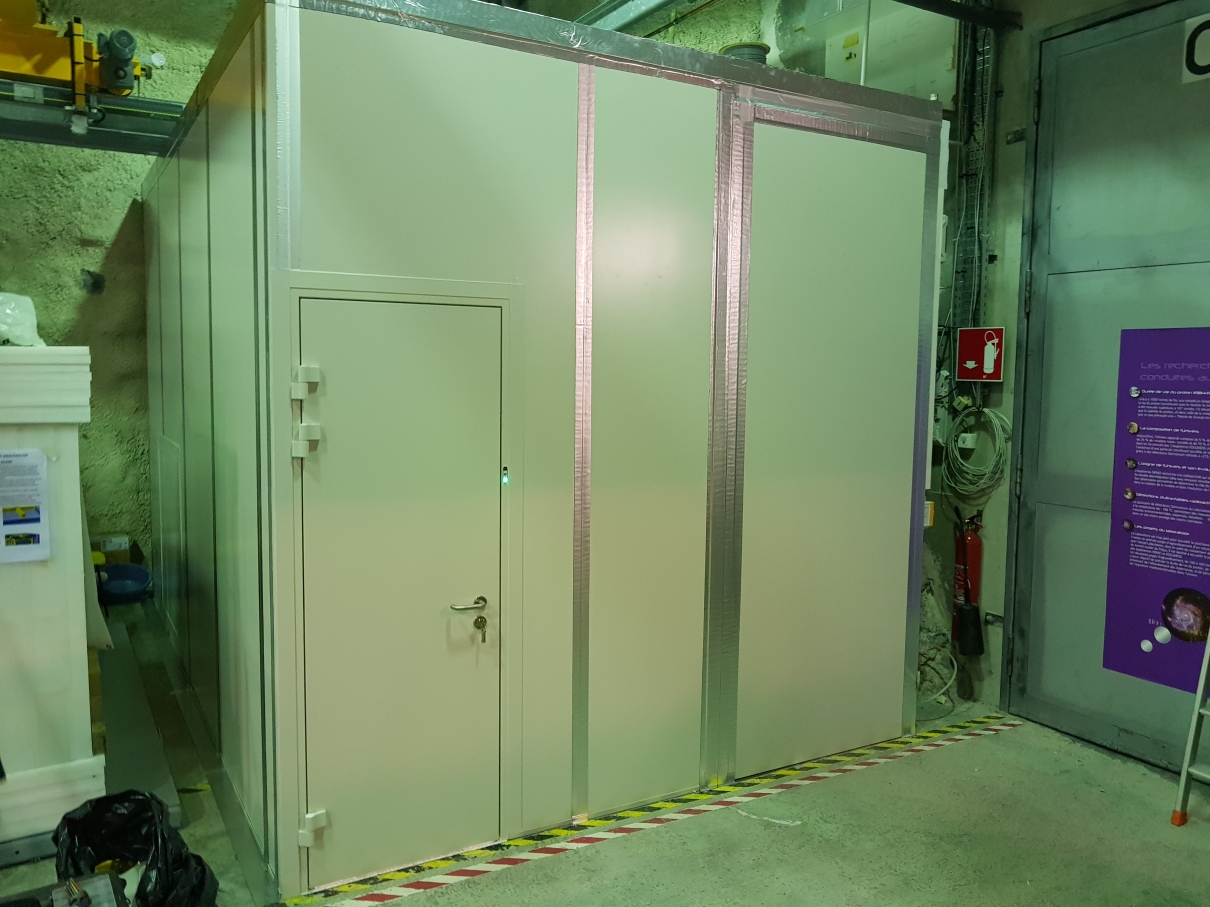Low Radon Cleanroom for Surface and Underground Laboratories
Low radon cleanroom for surface or underground laboratories is a new technology able to achieve at the same time very low aerosol concentrations in terms of ISO standard (ISO 1999) and very low radon concentration levels of 10-100 mBq·m-3 (reduce radon concentration in comparison to outdoor by a factor 1000). First prototype was built in SURO laboratory Prague, second in deep underground laboratory LSM Modane, France as a common project of SURO and IEAP CTU Prague. The need for this technology able to provide clean space with nearly “ZERO dose environment” for fundamental experiments in biology and nanotechnologies was recognized only recently.
 |
Only recently, the need has been recognized to achieve at the same time very low radon and minimum aerosol concentrations in the air of laboratories through the use of so-called low radon cleanrooms. Radon and its decay products emit alpha particles which can cause undesirable „single event effects“ in nanoelectronic circuits. Similarly, for the fundamental biological research in a radiation free “Zero dose” environment in underground laboratories the radiation from radon and its decay products can adversely affect the experiment. Radon air concentrations are required to be as low as possible in such special cases. The achievement of indoor radon air concentration in the laboratory at the level of some tens of mBq·m-3 requires advanced systems able to reduce radon concentration at least by a factor of 1000 in comparison with the outdoor environment. If the low radon cleanroom is placed in a deep underground laboratory such as the LSM Modane where the flux of muons, gamma-rays and neutrons is supressed, the “Zero dose environment” for fundamental research and technological applications can be achieved. The concept of the zero dose environment means reduction of all components of the background radiation by several orders of magnitude rather than a completely zero radiation background. Specifically, the decrease of radon concentration from typical values in the atmosphere or laboratories (in the range of 10-100 Bq·m-3) to tens of mBq·m-3 represents a reduction in the corresponding doses by a factor of 103-104. The muon flux (and dose) is reduced by a factor of 106. The strategy of protection experiments in a clean room against the neutron and gamma-ray fluxes is standard: multilayer shielding made of iron or clean Pb (20 -30 cm), polyethylene layer (16 cm) to thermalize fast neutrons followed by borated polyethylene (8 cm) to capture thermal neutrons. Such shielding surrounds detectors or devices installed in a clean room to reduce photon and neutron fluxes originating in rocks of the laboratory. The gamma background can be reduced by a factor of 103-104, the neutron flux by a factor of 103. It can be estimated that in the LSM Modane the dose can be reduced by a factor of at least 103, i.e. significantly lower than 1 μGy per year.
SÚRO and the Institute of Experimental and Applied Physics Czech Technical University in Prague developed two prototypes of a low radon cleanroom with the aim to achieve minimum aerosol concentrations in the air in terms of an ISO standard (ISO 1999) and minimum radon concentration lower than 100 mBq·m-3. Into the cleanroom only radon-free air is delivered from a radon trapping facility ATEKO. The first prototype was built in the laboratory of SÚRO Prague, the second more sophisticated prototype in the LSM Modane.
Štekl I., Hůlka J., Mamedov F., Fojtík P, Čermáková E., Jílek K., Havelka M., Hodák R., Hýža M. Low Radon Cleanroom for Underground Laboratories, Front. Public Health, 02 February 2021, https://doi.org/10.3389/fpubh.2020.589891
Jiří Hůlka
SÚRO
Jiri.hulka@suro.cz
Ivan Štekl
Institute of Experimental and Applied Physics
Czech Technical University in Prague
Ivan.Stekl@utef.cvut.cz